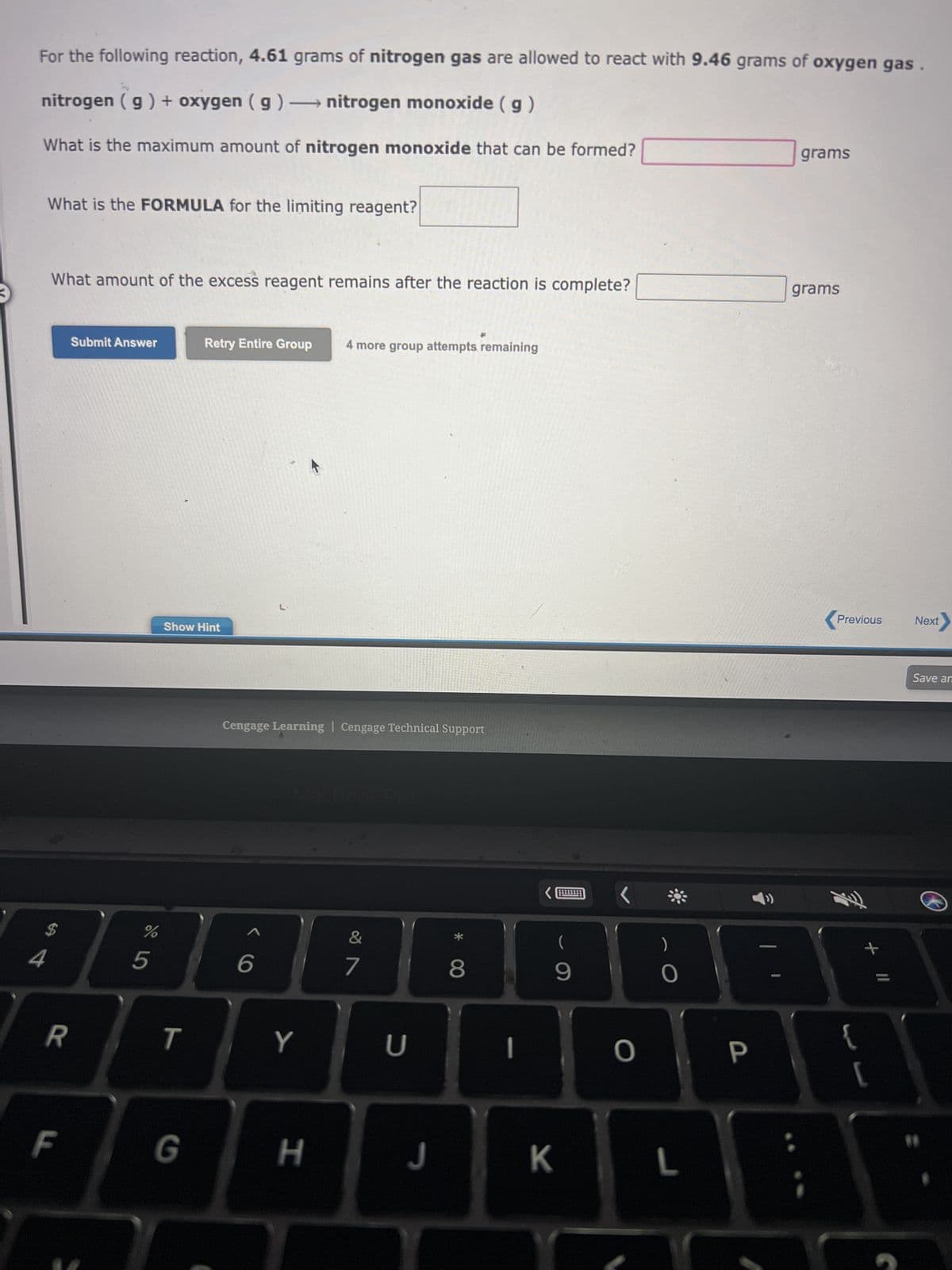For the following reaction, 4.61 grams of nitrogen gas are allowed to react with 9.46 grams of oxygen gas. nitrogen (g) + oxygen (g) →→→ nitrogen monoxide ( g ) What is the maximum amount of nitrogen monoxide that can be formed? What is the FORMULA for the limiting reagent? What amount of the excess reagent remains after the reaction is complete? Submit Answer Retry Entire Group 4 more group attempts remaining grams grams
Ionic Equilibrium
Chemical equilibrium and ionic equilibrium are two major concepts in chemistry. Ionic equilibrium deals with the equilibrium involved in an ionization process while chemical equilibrium deals with the equilibrium during a chemical change. Ionic equilibrium is established between the ions and unionized species in a system. Understanding the concept of ionic equilibrium is very important to answer the questions related to certain chemical reactions in chemistry.
Arrhenius Acid
Arrhenius acid act as a good electrolyte as it dissociates to its respective ions in the aqueous solutions. Keeping it similar to the general acid properties, Arrhenius acid also neutralizes bases and turns litmus paper into red.
Bronsted Lowry Base In Inorganic Chemistry
Bronsted-Lowry base in inorganic chemistry is any chemical substance that can accept a proton from the other chemical substance it is reacting with.

![Submit Answer
[Review Topics]
[References]
Use the References to access important values if needed for this question.
For the following reaction, 0.384 moles of hydrochloric acid are mixed with 0.302 moles of iron(III) oxide.
hydrochloric acid (aq) + iron(III) oxide(s)→ water (l) + iron(III) chloride (aq)
What is the formula for the limiting reagent?
Limiting reagent:
What is the maximum amount of water that can be produced?
Amount =
moles
Retry Entire Group 4 more group attempts remaining
CCBC
•
myc
Previou](/v2/_next/image?url=https%3A%2F%2Fcontent.bartleby.com%2Fqna-images%2Fquestion%2Fe76b69af-9a2c-4c6c-92e8-18acb680d06b%2F06283f2c-a21f-4953-9047-3c1795d8f2ed%2Fszvsbx5_processed.jpeg&w=3840&q=75)
Step by step
Solved in 3 steps with 1 images









